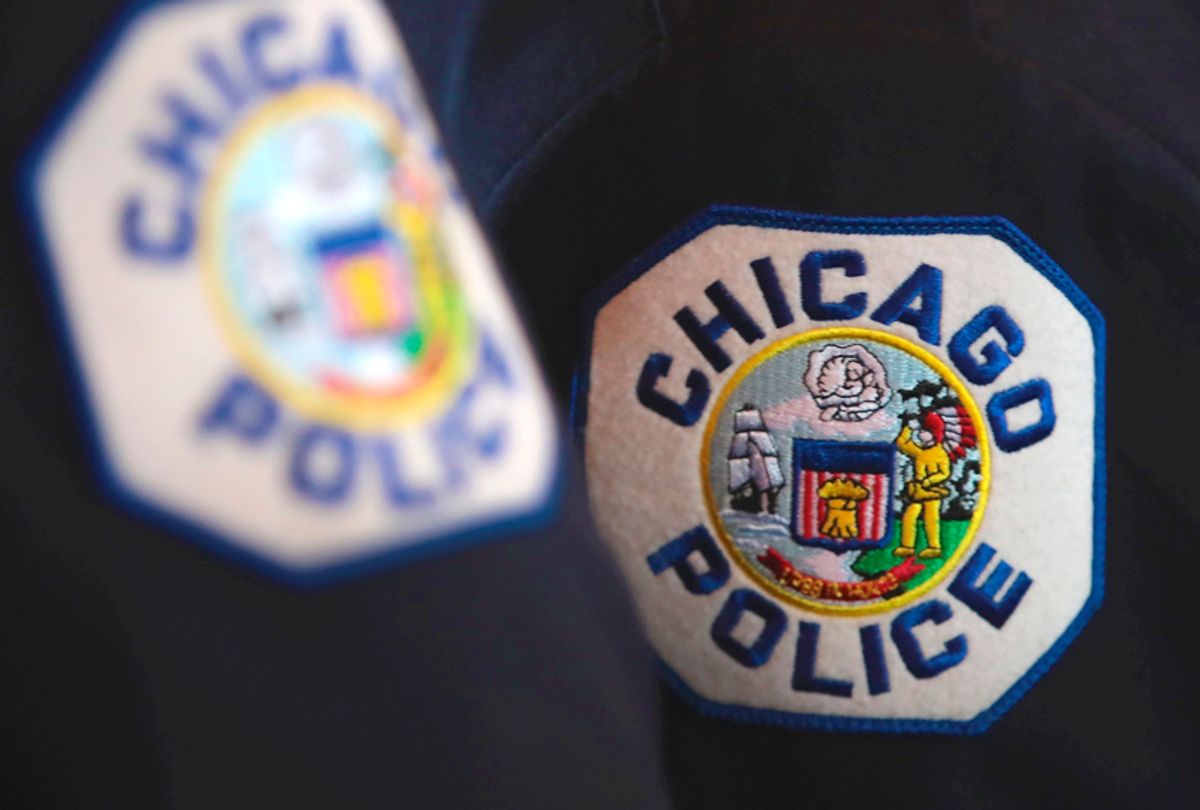![]() During January 1984, the Chicago Police Department labeled more than 700 people as suspected gang members following arrests for various crimes.
During January 1984, the Chicago Police Department labeled more than 700 people as suspected gang members following arrests for various crimes.
One was in his early 30s and identified as a member of the Black P Stones.
By last fall, nearly 34 years later, that individual was 77 — and still in what police commonly refer to as the department’s “gang database.”
In fact, the 77-year-old was one of 163 people in their 70s or 80s in the database, which now includes information about 128,000 people and counting, according to records I obtained through a series of requests under the state Freedom of Information Act.
It’s hard to fathom that there are so many elderly, active gang members in Chicago who need to be tracked by police. But those aren’t the only curious entries in the database. As of this March, it also included 13 people who are supposedly 118 years old — and two others listed as 132.
Over the last year, all kinds of questions have been raised about the way the police department collects and uses its gang data). But it’s become clear to me the database is riddled with dubious entries, discrepancies and outright errors.
These are serious problems, because Chicago police and other law enforcement officials regularly cite the database during criminal investigations, immigration enforcement and court proceedings. Information from the database could also surface in background checks for jobs. And getting your name removed is all but impossible.
Yet the department has long fought against releasing portions of the database, or explaining how it’s generated or used.
Last year, two men brought separate lawsuits against the department—and, in one of the cases, against U.S. Immigration and Customs Enforcement as well—after federal officials detained and moved to deport them. They were targeted because the database identified them as gang members.
Both men said the information was false: Police had added them to the database based on their race and the neighborhoods where they lived, they said, and gave them no opportunity to remove their names. One case was settled in December, with police conceding they had made a mistake. The other case is still in federal court.
Here’s one example of how confusing the issue is: There technically isn’t a stand-alone list or database of suspected gang members, though police often refer to it that way. The department tracks gang affiliation along with arrest records, reported crimes and other information in a massive data “warehouse” called the Citizen and Law Enforcement Analysis and Reporting (CLEAR) system.
Officers enter information about everyone who is arrested, as well as many people who are stopped but not charged with a crime.
The department’s internal rules for classifying someone as a gang member are fuzzy. If suspects admit they are in a gang or have gang tattoos, that counts. In some instances, police base the decision on what they hear from sources deemed to have given them “reliable information” in the past.
In addition to Chicago police, other police departments, plus state and federal law enforcement agencies, have access to the data.
Even some cops who use the database have concerns about its fairness and accuracy. One officer told me he wonders if it’s constitutional. Another said he double-checks information in the database by looking up police reports, because he’s aware that some people are identified as gang members based solely on where they live.
“I know to be skeptical,” he said.
But that officer also uses the data to get a sense of people he encounters — who they’ve associated with, where they’ve been. Police need the tool for their efforts to reduce violence, he argued: “Don’t try to get rid of our database.”
The records I obtained from the department don’t inspire much confidence.
In November, after three months of denials and delays, the department gave me a file from its data warehouse with 128,137 entries. In March, I received updated information.
Because of privacy concerns, the two files do not include names or any records of juveniles. But they offer some revealing glimpses of the department’s gang data.
For starters, nearly everyone in the database is a person of color: 70 percent are African-American and 25 percent are Hispanic. Most are in their 20s and 30s.
The gangs listed range from well-known street organizations such as the Gangster Disciples to obscure or mostly defunct groups with only one or two alleged members in the database, such as the Thorndale Jagoffs.
The records also show that the gang database is expanding. Over the last three years, police added thousands of people they had never arrested, according to the data.
Still, the files are riddled with errors and illogical information that police officials couldn’t explain to me.
In response to questions, the department said it will revamp how it gathers, maintains and uses gang-related information.
“Criminal justice and arrest data are important tools for CPD to help make communities safer,” department spokesman Anthony Guglielmi wrote in an email. “That’s why ensuring the information is accurate and reliable is crucial.”
He said the department is drafting a plan to include vetting who goes into the database, limiting which agencies can access it, and giving people a way to “challenge and appeal gang affiliation status.” A public comment period will be scheduled.
In the meantime, the city’s official watchdog, Inspector General Joe Ferguson, has announced a review of the gang database and has held community meetings to gather input.
At a meeting last week, Terry Williams, a longtime West Side resident, said he was pulled over by police a few weeks ago and asked if he was still in a gang. The information, he said, dated to a drug conviction more than two decades ago.
“Don’t keep people hostage because of [their] past,” he said. “It’s like you never get to come home from the war.”



Shares